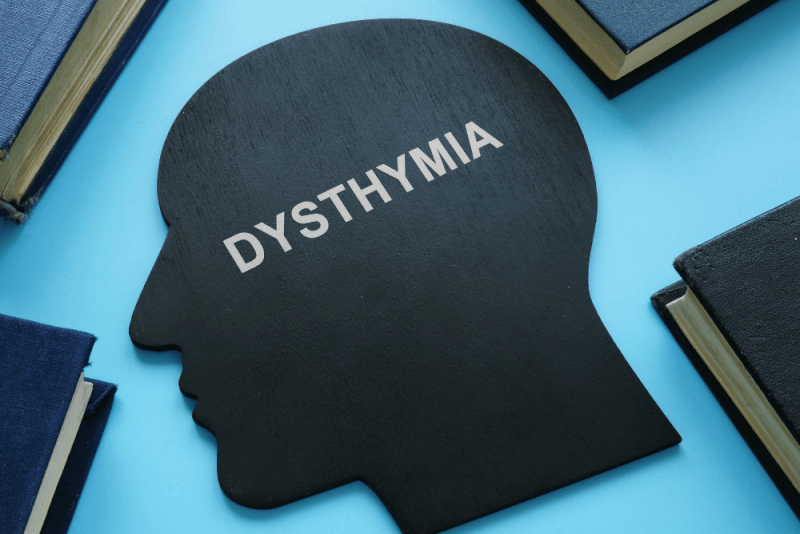What is stuttering?
Stuttering, which occurs when the muscles used while speaking twitch or move uncontrollably, disrupts the flow of speech. It causes people to pause and get stuck on unwanted sounds and words. Stuttering, which usually affects children, can be seen at any age. Stuttering, which is one of the treatable speech disorders, has a high success rate.
People who stutter know what they want to say. But they find it difficult to say these things. One of the most common problems in stuttering is the repetition or prolongation of words, syllables or letters. They may also pause during speech when they encounter a problematic word or sound.
Stuttering is common among children learning to speak. Because young children's speech and language skills are not developed enough to say what they want to say.
A significant proportion of children outgrow this stuttering, which is part of the developmental process. In some cases, however, stuttering becomes a chronic condition that continues into adulthood. This kind of stuttering can affect people's self-esteem and their relationships with other people.
Stuttering diagnosis
To diagnose stuttering, the specialist will start by listening for any signs of stuttering. He or she will also ask about the person's health history, when the symptoms started and under what circumstances they occur.
Since stuttering is usually diagnosed in childhood, the diagnosis is made by pediatricians. A significant proportion of people with persistent stuttering are diagnosed with developmental stuttering in childhood.
However, it is also possible, although rare, that adults with persistent stuttering did not receive a formal diagnosis in childhood. Medical tests are not usually necessary to diagnose stuttering.
Diagnosis of acquired stuttering
If adults start stuttering unexpectedly, some tests are necessary.
Because stuttering in adulthood can be a symptom of aphasia. Causes of aphasia include traumatic brain injury, strokes and brain tumors. The following tests can be requested to determine this.
- Computed tomography
- Magnetic resonance
- Positron emission tomography
Causes of stuttering
The exact cause of stuttering is not known. However, he suspects that various factors may contribute to the occurrence of stuttering.
These factors include the following;
- If one of the person's parents or siblings has stuttering, the person is 3 times more likely to have stuttering.
- DNA mutations can contribute to stuttering. It also affects whether stuttering will improve over time.
- People who stutter are more likely to have certain brain areas that are different. These are often seen in parts of the brain that control the muscles used during speech or muscle coordination.
- Abnormalities in speech motor control are thought to be one of the possible causes of developmental stuttering.
- Strokes, traumatic brain injury or other brain disorders cause speech to slow down, pause or repeat sounds.
- When people feel under pressure, they may have problems with fluency. This emotional pressure causes people who stutter to hang out more.
Risk factors for stuttering
Stuttering is more common in men than in women.
Other factors that increase the risk of stuttering include the following.
- Children with developmental delays or other speech problems in childhood are more likely to stutter.
- Stress in the family, high parental expectations, or other types of pressure can exacerbate existing stuttering.
Symptoms of stuttering
To speak, the muscles in the face, mouth, throat, chest and abdomen need to be coordinated. Stuttering is caused by the uncontrolled movement of these muscles used to speak.
7 basic symptoms constitute the official criteria for stuttering and at least one of them must be present for the doctor to diagnose stuttering.
Repetition of sounds or syllables
This is usually seen in the first syllable of the word, repeating the sound or syllable until the whole word is spoken and then continuing to speak.
Sticking to certain sounds or syllables
It is a symptom when a sound or syllable is stuck or prolonged longer than necessary.
Pauses in the middle of words
A noticeably long pause in the middle of a word, even if it is unnecessary.
Blocking
In this symptom, people pause silently while speaking or make sounds like hmm, eee. The flow of words is therefore blocked.
Word replacement
When a person stutters on a word or phrase, a different word or phrase is used to get over it.
Excessive stress
This is when too much stress or tension is placed on part or all of a word.
Repeating monosyllabic words
It is a symptom caused by the repetition of single-sound words.
Other symptoms of stuttering
People who stutter may also experience the following symptoms.
Spasm overflow
It is a condition in which the muscle movements that cause stuttering are seen on the face, neck, shoulders and some parts of the arms.
Deteriorating gestures and facial expressions
People who stutter often develop movement habits that occur during stuttering. For example, unusual blinking, looking away, clenched fists and grimacing.
Symptoms may vary according to mood
Symptoms caused by stuttering are often worse when tired, excited, anxious or stressed.
In addition, talking about new and complex topics can also lead to an increase in symptoms. The symptoms of stuttering are usually relieved by rest or relaxation.
Absence during other vocal activities
Stuttering usually does not occur when talking to objects and pets, reading aloud or singing.
Impact on other mental health conditions
Stuttering can cause feelings of frustration or shame. People who stutter are therefore more likely to have mental health problems such as anxiety or depression.
Stuttering treatment methods
A comprehensive evaluation by the speech and language catalog is necessary for the planning of stuttering treatment.
There are several different approaches to treating children and adults who stutter. Because individual problems and needs vary, what works for one person may not be effective for another.
Stuttering treatment may not eliminate stuttering completely. However, with treatment, the following skills can be learned.
- Improving speech fluency
- Improving effective communication
- Full participation in school, work and social activities
Speech therapy
With speech therapy, people can be taught to slow down and recognize problematic moments in speech.
In the early stages of speech therapy, one may speak very slowly and carefully. In time, however, a more natural speech pattern will emerge.
Electronic devices
There are various electronic devices to improve speech fluency. These devices contribute to slowing down speech by providing delayed auditory feedback. If the speech is fast, the sound from the machine will be distorted.
Another device used in electronics mimics speech, making it sound as if it is speaking in harmony with another person.
Some of these devices are small enough to be worn during daily activities. The speech and language pathologist decides which device to choose
Cognitive behavioral therapy
This type of psychotherapy teaches how to identify and change the thinking patterns that can make stuttering worse. It can also help resolve stress, anxiety, or self-esteem problems associated with stuttering.
Parent-child interaction
An important part of coping with stuttering is the involvement of parents in the implementation of techniques at home.
Stuttering exercises
Stuttering exercises have an important place in the treatment of both adults and children.
It is important that it can be applied continuously in home environments in order to ensure reinforcement.
Stuttering exercises for adults
Some exercises that adults can do to support the treatment of stuttering include the following.
Diaphragmatic breathing
Diaphragmatic or costal breathing is a popular exercise in stuttering exercises.
The steps to be taken for diaphragmatic breathing exercise include the following;
- The person should lie on their back, bend their knees and keep their head in a comfortable position. This provides relaxation.
- Then one hand is placed on the chest and the other on the abdomen.
- It is necessary to breathe slowly and calmly through the nose. At this stage, the shoulders and chest should remain immobile.
- Then the exhalation starts. At this stage, the hand on the chest should remain still.
Progressive relaxation
Stress and anxiety worsen the symptoms of stuttering. The progressive relaxation technique helps to relax the articulator muscles.
It also relieves anxiety, hypertension, general muscle stress and tension. The following steps should be followed in order to perform the progressive relaxation exercise.
- In a quiet and comfortable place, relaxing music is turned on and nasal breathing is required throughout the exercise.
- Sit or lie down comfortably.
- The arms are held relaxed and away from the body with the palms facing upwards.
- The legs are slightly spread and relaxed.
- Each muscle, from the toes to the head, needs to be focused individually.
- The breath is slowed down.
- All muscles are tightened and relaxed for 5 seconds.
- There should be 20-second breaks between each muscle group.
Light articulator contact
It is one of the exercises that teaches you to use gentle mouth movements. These are exercises to ensure proper airflow while speaking.
It also includes language exercises. These exercises should be taught by specialized therapists.
Talking while exhaling
It is a technique for shaping fluidity. Talking while starting to exhale helps to change the onset of phonation.
The stages of this exercise are as follows;
- First of all, it is necessary to breathe through the nose.
- Start talking while exhaling.
Pause and sentence construction
Another fluency shaping technique is the technique of pausing and sentence formation. In this exercise, natural pauses are extended or additional pauses are inserted between words or phrases in speech.
Long speech
Long-term speech exercises should also be done with speech therapists. In this exercise, vowels are lengthened to help build fluency. This exercise is combined with a light articulator exercise.
Other exercises
Among the exercises that adults can apply for stuttering are the following.
- Awareness
- Meditation
- Yoga
- Noting daily achievements
- Seizing opportunities to overcome new situations
- Aerobics
Stuttering exercises for children
Some exercises can also be used in the treatment of stuttering in children.
It is important that these exercises are first taught to the child by the therapists and then the child is supported in the process by the parents. Here are some of the exercises recommended for children.
Learning about pauses
In this exercise, children are given a sentence or phrase and asked to say it aloud.
The child is encouraged to pause at the end of the word, not in the middle. When a child learns to stop at the end of a word instead of the middle, stuttering decreases over time.
Syllable-timed speech
In this exercise, also called STS, it is necessary to speak with a pause after each syllable. If children have difficulty with this exercise, they can be asked to practice by tapping their legs for each syllable.
AEIOU therapy
This exercise, which falls within the field of speech-language therapy, helps children pronounce vowels as loudly as possible. This exercise is also practiced at home.
Simple language usage
Parents should use simple language and short sentences when communicating with children. In this way, children can feel more secure.
Prolonged listening time
To help children, it is necessary to take time to listen to them. No suggestions or instructions should be given during listening. They need to be helped to express themselves while playing.
Speech games
There are many different conversation games. These games allow the child to overcome stuttering naturally.
Complications of stuttering
Other health problems that can be seen due to stuttering include the following.
- Difficulty communicating with others
- Anxiety about speaking
- My speech
- Avoiding situations that require talking
- Loss of social, school or work participation and achievement
- Being bullied
- Decreased self-confidence
Types of stuttering
Within the general category of speech disabilities, stuttering is a specific type of fluent speech disorder.
Some next to it are divided into 3 different types within itself.
Developmental
Fluency disorder that starts in childhood is defined as developmental stuttering. It is a neurodevelopmental disorder in which the brain develops differently than expected.
It is a condition that occurs in almost all children during childhood. The average age of onset is around 3 years.
Neurogenic
Signaling abnormalities between the brain and nerves or muscles cause neurogenic stuttering.
Psychogenic
The type of stuttering seen due to problems arising from the thinking and reasoning method part of the brain is called psychogenic stuttering.
Developmental process of stuttering
The development of stuttering has 5 levels. Each level is assessed in 4 core areas. These areas include core behaviors, secondary behaviors, emotions and attitudes, and underlying processes.
Not all people who stutter always fit neatly into one category. Instead, there are some behaviors that reflect one level and others that reflect another. The developmental process of stuttering is hierarchical and includes the following stages.
Normal fluency disorder
All features of this level need to be seen in order for stuttering to be diagnosed. However, any of the more advanced features should be considered borderline or above.
The frequency of fluency should be less than ten per hundred words. Repetitions are slow and even. Repetitions occur two or fewer times. In general, the child's disfluencies appear relatively relaxed and the child is hardly aware of them.
Borderline stuttering
More than two stutters in one hundred words. People at this level are characterized by partial word repetition and repetition of monosyllabic words.
More than two repetitions occur in each insertion. However, stuttering at this level remains loose and relaxed.
The onset of stuttering
Important features of stuttering at this stage include nervousness and rushing. Extensions also occur at this stage. Repetitions can be fast and sudden.
In addition, fluctuations in pitch can also be seen during repetitions and extensions. In addition, among the features that can be seen are the following.
- Facial tension
- Difficulty initiating airflow or making a sound
- Being aware of one's stuttering
- Don't be disappointed
- Escape behaviors such as shaking the head or blinking to stop stuttering
- The negative reaction to one's awareness is the factor that causes the disorder to progress.
Moderate stuttering
In addition to all the above-mentioned features, the following symptoms may also be observed at this stage.
- Avoidance behaviors
- Onset of conditioning towards the experience of stuttering
- Intolerance to stuttering
- Start avoiding words or situations
- Feelings of shame and fear come to the surface
Advanced stuttering
This stage is usually seen when people are 14-15 years old. In general, adult treatment methods should be used.







